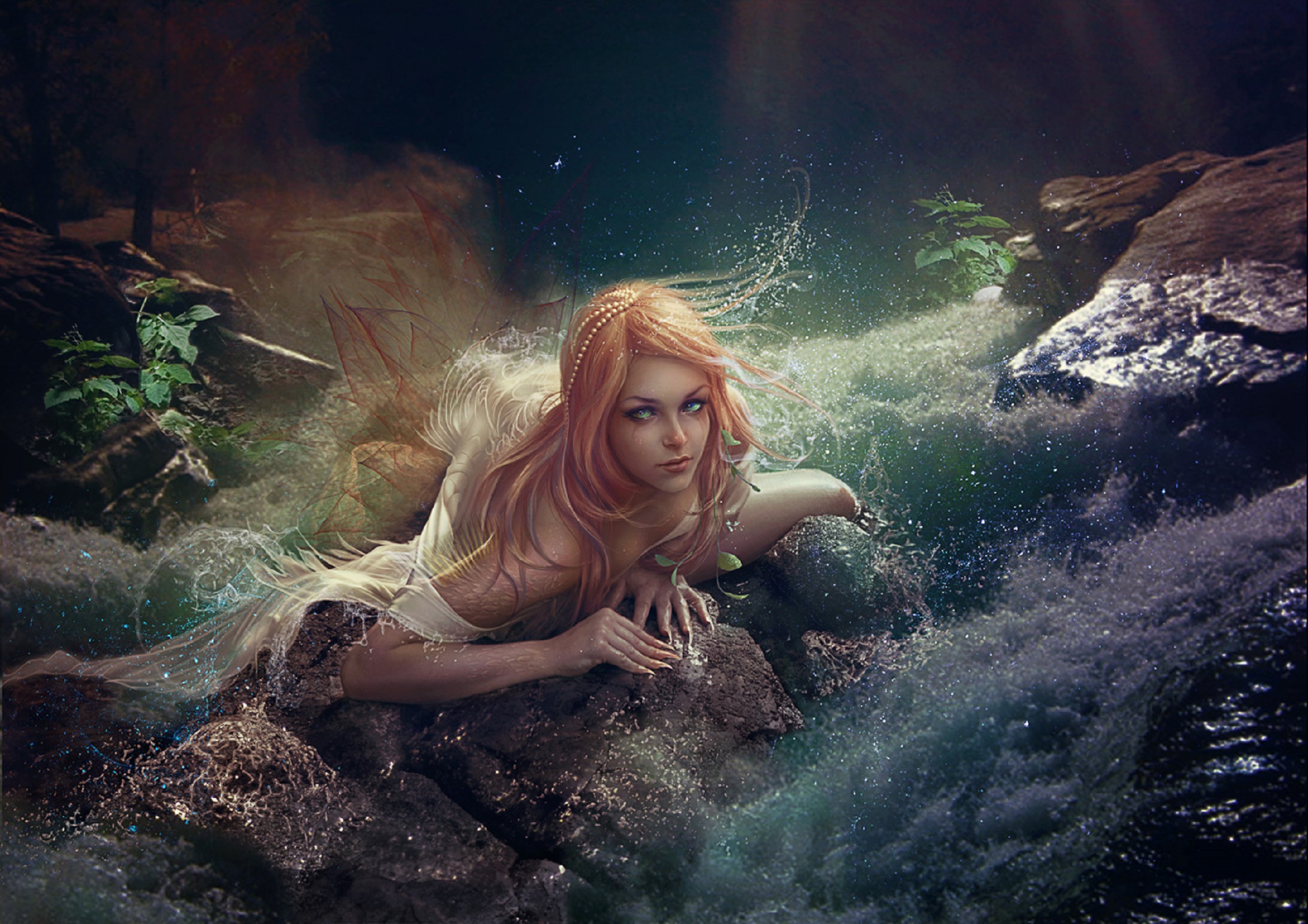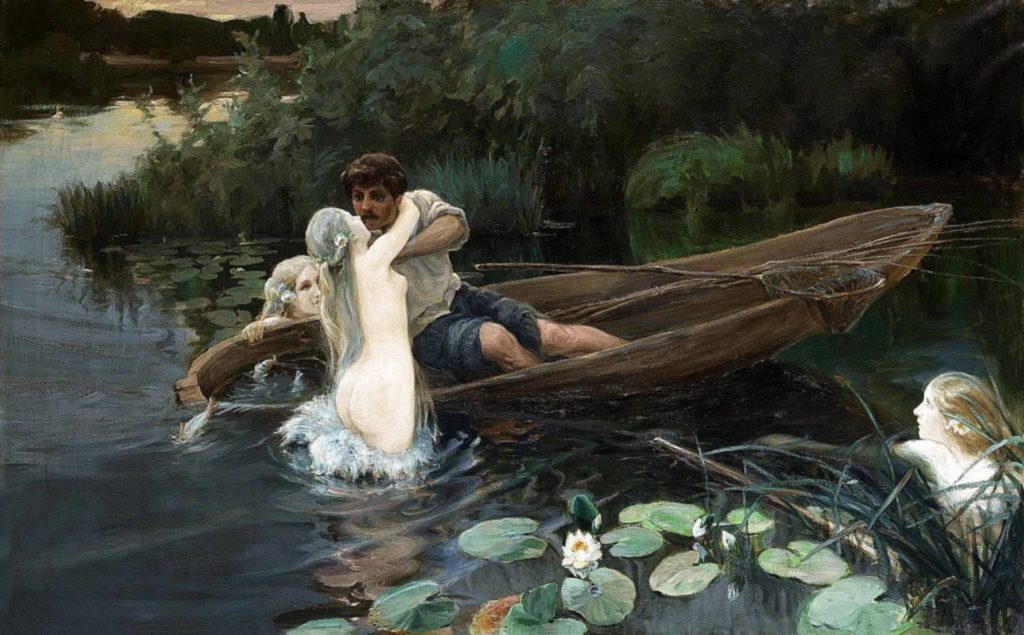
Many years ago I began reading about and studying the folklore, deities and overall mythology of the Slavic culture mainly after discovering I have some Slavic lineage. What I quickly learned was how much I enjoy it and even to this day still am always on thew lookout for books regarding this subject. In particular, as I am all about anything with water, I especially enjoy learning about Beings that reside in or around the water of Slavic folklore and even Kupala who is the Slavic goddess of joy and water. If you enjoy Slavic folklore as much as I do then I hope you will enjoy this blog post I thoroughly enjoyed putting together for my readers.
The Rusalki, by Jane L. Mickelson
Beautiful, mysterious, deadly: mermaids of Russian folklore
They meet by moonlight, rising out of lakes and ponds or drifting down from the branches of birch trees, hair drip-ping with dew. Their corpse-pale skin reveals their inhuman nature. Their watery essence links them to ancient, elemental forces. In Russian and Ukrainian tradition they are called the rusalki, and they belong to the spiritual world of women, as the mythology surrounding them testifies. For not only do they bring the fertilizing spring rains when invoked by village maidens, but they also punish any man who chances upon them, using as a weapon the very element that the women so longingly call forth: they lure the interloper into the water and drown him.
In some versions of tales about them, the rusalki are portrayed as shape-shifters, most frequently appearing as unearthly and beautiful young women, but also as birds, particularly water birds such as swans or ducks. This aspect of their nature as a mixture of animal and human relates them to other female water-beings found throughout mythology and folklore around the world, from the sirens that tempted sailors to their doom in the Odyssey to the mermaids that continue to appear in popular modern films and literature. Joanna Hubbs, who has traced the lineage of the rusalki in her book Mother Russia: The Feminine Myth in Russian Culture, views them as the descendants of an earlier Slavic water elemental, a character part woman and part beast, “the beregina, [which] assumed in folk art the form of the half-woman and half-bird or fish-siren.”1 Hubbs states that the name of the rusalki’s ancestor finds its source in the word “bereg,” which may be translated as “shore.” Continue reading HERE.
Vodyanoy – Water Spirit/The Spirit of the Lake
Also known as Vodnik, the Water Spirit of Dvořák’s opera is better known in folklore as Vodyanoy (amongst other names, such as Wassermann or Nix). Dvořák appeared to be particularly fond of this Water Goblin, writing a separate symphonic tone poem titled Vodník.
Hailing from Slavic, German and Czech’s shared folklore, Vodyanoys were often depicted as humanoids with toad-like features, such as gills, webbed fingers, a greenish hue and anuran features. Usually found riding along the river on a half-sunk log, the Vodyanoy were generally viewed as elderly old men, in stark contrast to the youthful feminine Rusalkas.
Whilst not necessarily viewed as malevolent, Vodyanoy (along with Rusalki) were often blamed for drownings, with the Vodyanoy storing the souls of the drowned in teapots. Usually thought to be pretty lazy, they pass the time by playing cards, smoking pipes, and watching the water pass by. SOURCE

Waters and Sacred Spaces
We know from the accounts of chroniclers that pagan temples at Radegast (Rethra) and Wolin, both in modern Poland, were surrounded by bodies of water: swamps, moats and lakes [2]. Chroniclers tell of local beliefs about spirits in these waters, and we can speculate about their use in ritual: bathing and sacrificing in these waters during holy times of the year.
Veneration of springs is a well known in Slavic cultures and persists even to this day, in the form of cults of Christian saints, in many rural areas. But this practice is certainly ancient; aside from the desire for the health benefits of mineral water, springs were either the object of worship or accompanying shrines to gods among Slavic pagan tribes living near the Elbe river.
The Głomacze tribe’s spring was famed for its fortune-telling: it was coated with acorns, oats or wheat to predict peace, and ash or blood to predict war [3]. Acorns covering these waters meant nearby oaks to drop them: oak being a sacred symbol of the thunder god, Perun. Similarly, in Szczecin, a fountain at the base of a large oak tree was venerated as a shrine, to which god the chronicler does not name, but we might speculate it to be the thunderer [2]. Continue reading HERE.

Surprisingly, the Slavs imagined their own Styx, a border river between life and the underworld, and in Russia, this river was called Smorodina, which translates quite clearly as “The Stinky One.”
The river is “stinky,” because it is made of constantly burning and fuming fire. Smorodina is the border between our world and the afterlife that a man’s soul needs to cross to get to the land of plenty (probably The Three Nines Kingdom).
“The melting river is ferocious, a fierce river, the angriest one of all. Its first trickle is like a fire, another one is a spark falling, and because of the third one, the smoke is coming down in columns,” an old Russian bylina (oral epic tale) “Dobrynya and The Serpent” relates. Continue reading HERE.

It was also believed that in ba’nyas (Russian saunas) lived the water spirit named B’annik. He might do various evil things: to scare you while washing, throw stones from the oven or even to raw. He always washed after all the humans at night accompanied with demons, L’eshijs, mermaids & other minor spirits. To please Bannik people left a broom, a bar of soap & some water in a bathing barrel. Besides it was forbidden to build a house on the sauna’s place. This area was considered to be cursed. SOURCE
Further Resources
